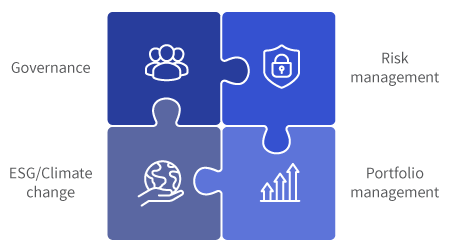Investment beliefs - Teachers
How the plan decides where to invest
Investing for such a large plan is complex. Policies help the Teachers' Pension Board of Trustees decide how and where to invest.
Investment beliefs
The board follows a set of investment beliefs as a guide for making investment decisions. These beliefs help the board define the plan’s approach to investing to make your pension a secure and valuable part of your future.
Investment beliefs also help the board make practical decisions about responsibilities such as:
- Monitoring British Columbia Investment Management Corporation (BCI) as the fund’s investment manager
- Allocating assets
- Setting goals for investment performance
Each investment belief is backed by supporting principles.
The investment beliefs fall into four categories:

Governance
- Good governance helps the plan provide BC teachers with reliable retirement income
Risk management
- The board must take and effectively manage risk to achieve the plan’s long-term goals
- Focusing on long-term investment results gives the plan a competitive advantage
Environmental, social and governance/Climate change
- Investments perform better over the long term and have less risk when the board considers environmental, social and governance matters
- Climate change is a complex issue that will have a significant long-term impact
Portfolio management
- BCI chooses between active and passive management strategies based on what it expects to bring higher returns
- Costs must be effectively managed
- The board must understand the plan’s liabilities to set the investment strategy
- No one investment style, region or capitalization (company size) will always produce higher returns, and it isn’t possible to predict which will perform better over a given period
See the Statement of Investment Policies and Procedures for a complete list of investment beliefs and supporting principles.
